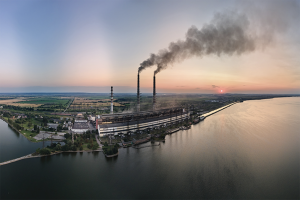
- Image via Wikipedia
While 1.8 billion people have Internet access, nearly one billion people lack access to adequate amounts of
fresh water, according to a comprehensive new
Living Planet report by the WWF and Global Footprint. It will take a concerted effort on the part of researchers, industry, and governments to make a dent in this figure, but fortunately, there is increased activity around water and wastewater technology and research, which we'll cover in an upcoming post.
Techcrunch recently took a look at the Living Planet Report and culled these 10 startling facts about the world's water supply:
- Of the world's total estimated 6.5 billion population some 28% has internet access today, while 15% of the population doesn't have enough freshwater to live a healthy life.
- Seventy-one countries are experiencing stress on blue water resources, defined as sources of water that people withdraw, use and don't return to the ecosystem. Nearly two-thirds (or 45) of these countries are experiencing moderate to severe stress.
- Countries experiencing blue water resource stress today are major producers of agricultural goods for national and global markets, including: India, China, Israel and Morocco. The strain on water resources will become more acute with increased human populations and economic growth, and be further exacerbated by the effects [of military conflict] and climate change. It will also make everything from energy to food more expensive.
- Since 1900, more than half of the world's wetlands have disappeared.
- Overall, about one-third of the world's 105 largest cities obtain a significant proportion of their drinking water directly from protected areas.
- The "water footprint" of a typical, U.S. cup of black coffee is massive -- an estimated 591.74 cups (140 liters). This includes all the water used for growing, harvesting, refining, transporting and packaging the coffee beans, selling the coffee, and brewing the final cup. It's that big if you drink it out of a reusable mug.
- A latte-to-go with sugar has a water footprint of 845.35 cups (200 liters). The water footprint increases when ingredients are added, and will vary according to whether sugar, for example, came from sugarcane or sugar beet. If the final product is a takeaway coffee in a disposable cup, the water footprint will include the volume of water used to produce the cup as well as the water used to produce, deliver and make the coffee.
- The United States has the third largest "production water footprint" in the world, after India which has the largest, then China. A production water footprint accounts for the volume of green water (a.k.a. rain) and blue water (withdrawn water ) that's consumed in the production of agricultural goods from crops and livestock.
- The agriculture industry forecasts that "a doubling of agricultural output without associated increases in the amount of land or water used" is possible by 2050.
- The Living Planet Report tracks 714 species living in the world's currently available freshwater, 636 species in marine water, and 1,341 terrestrial species. These marine and freshwater species declined 10% more than terrestrial from 1970-2007.
Related articles






